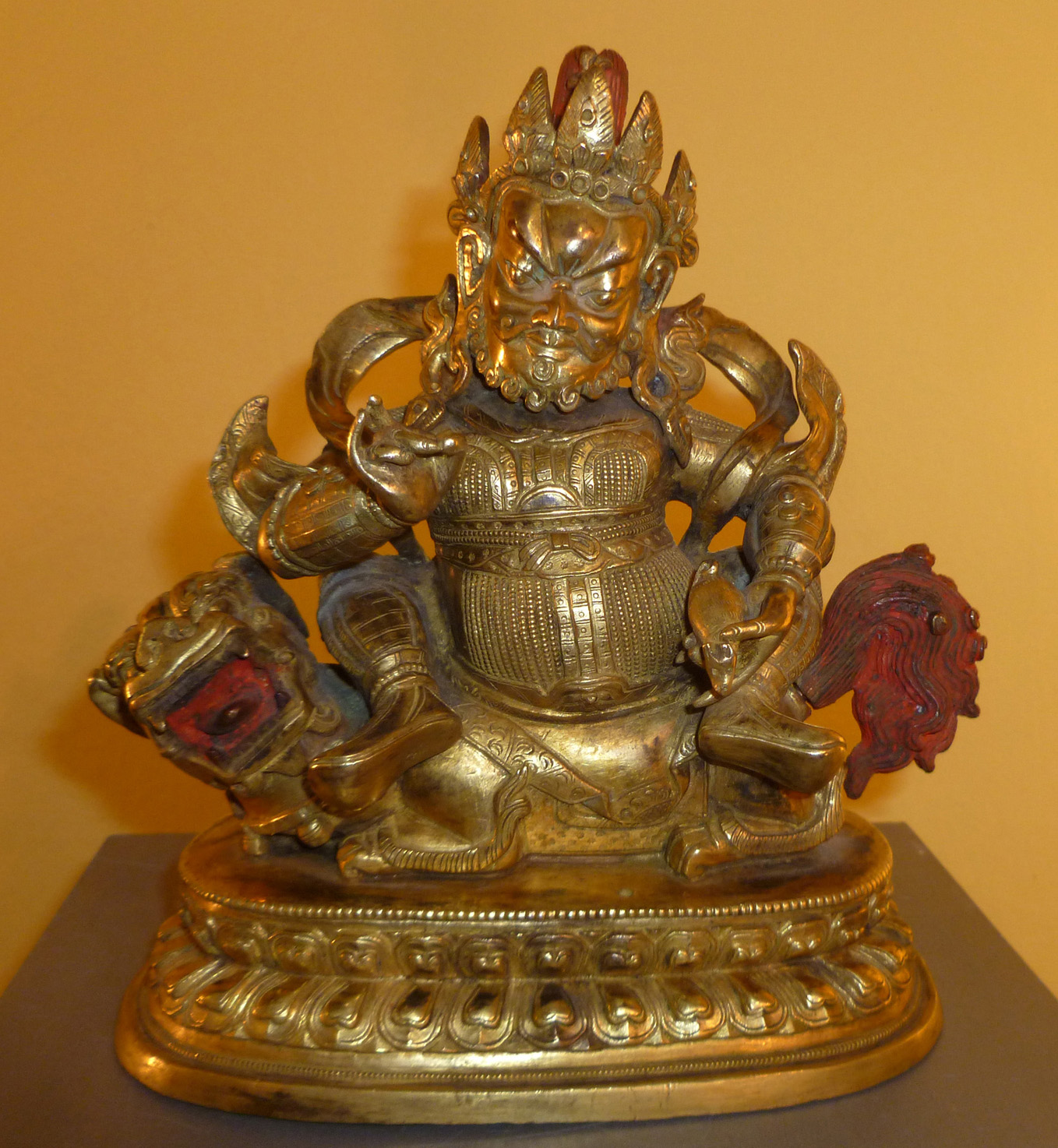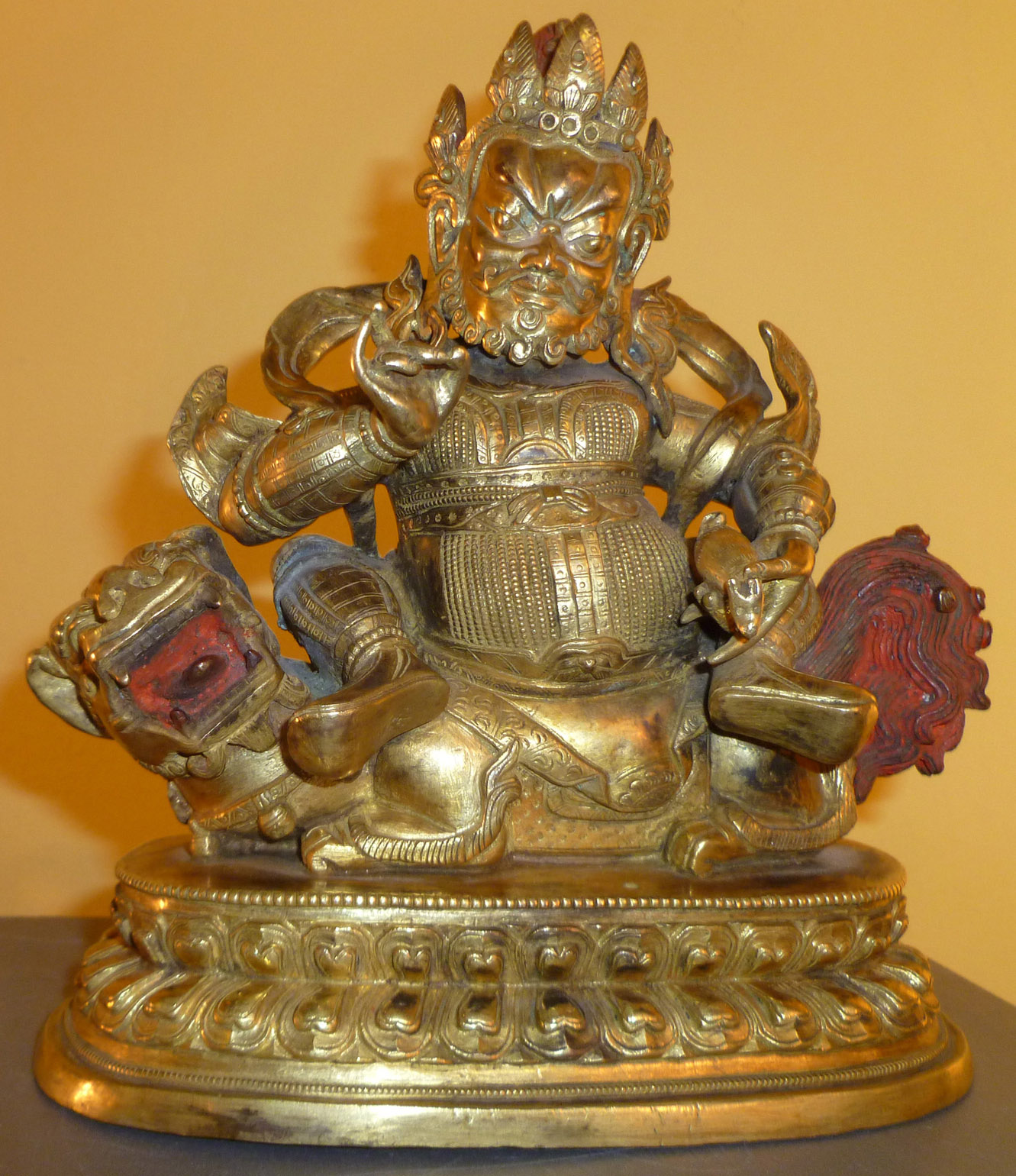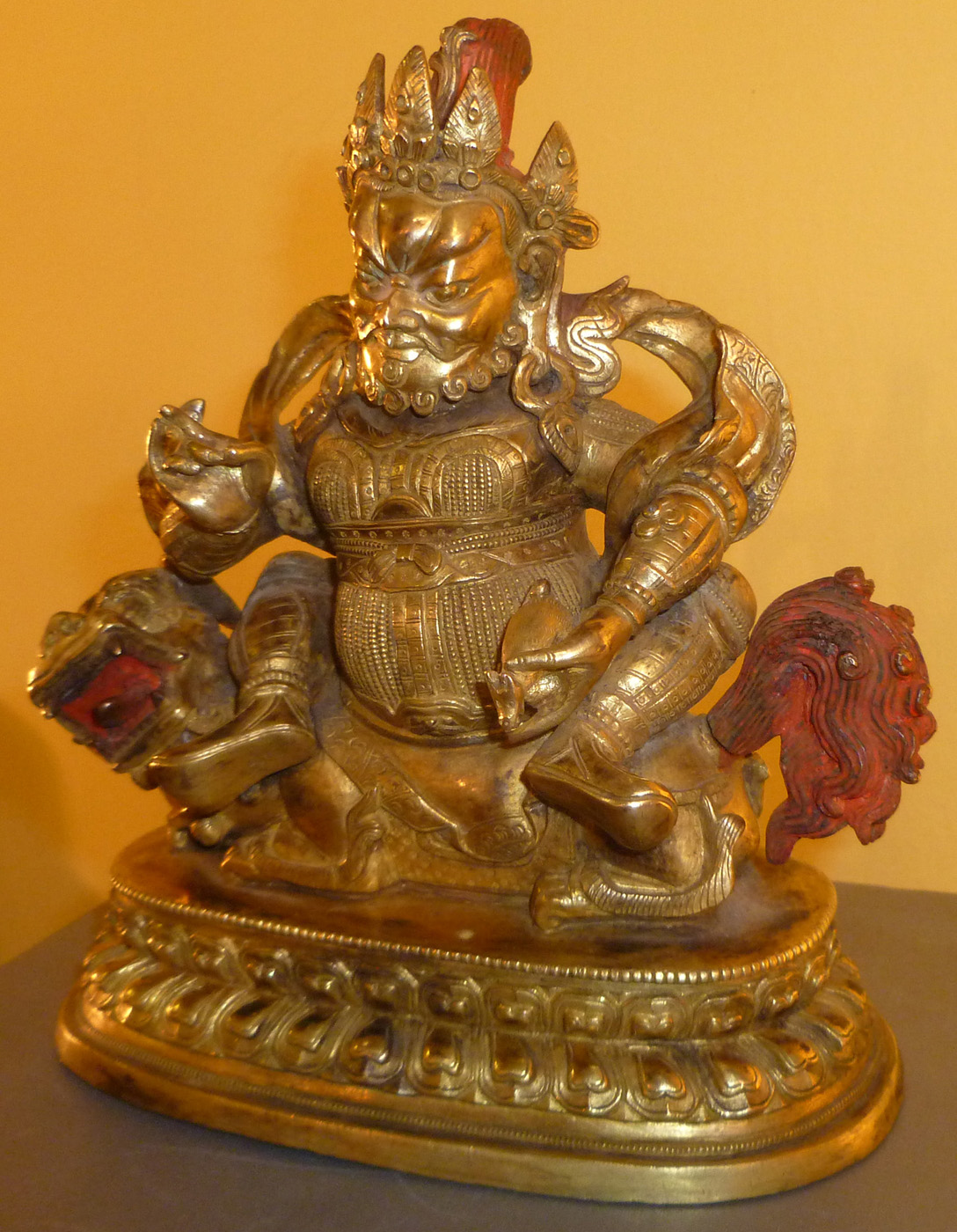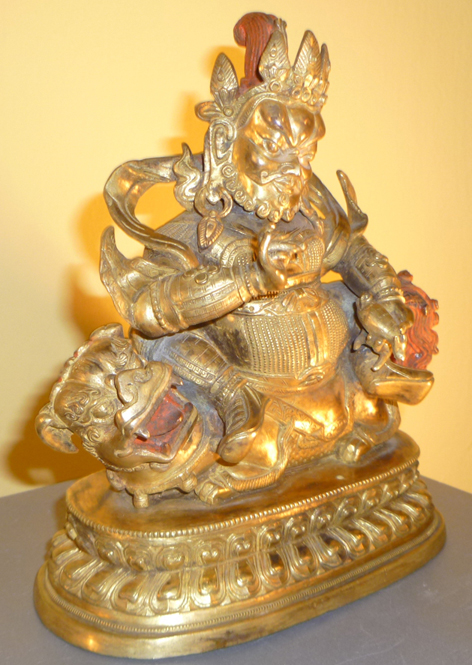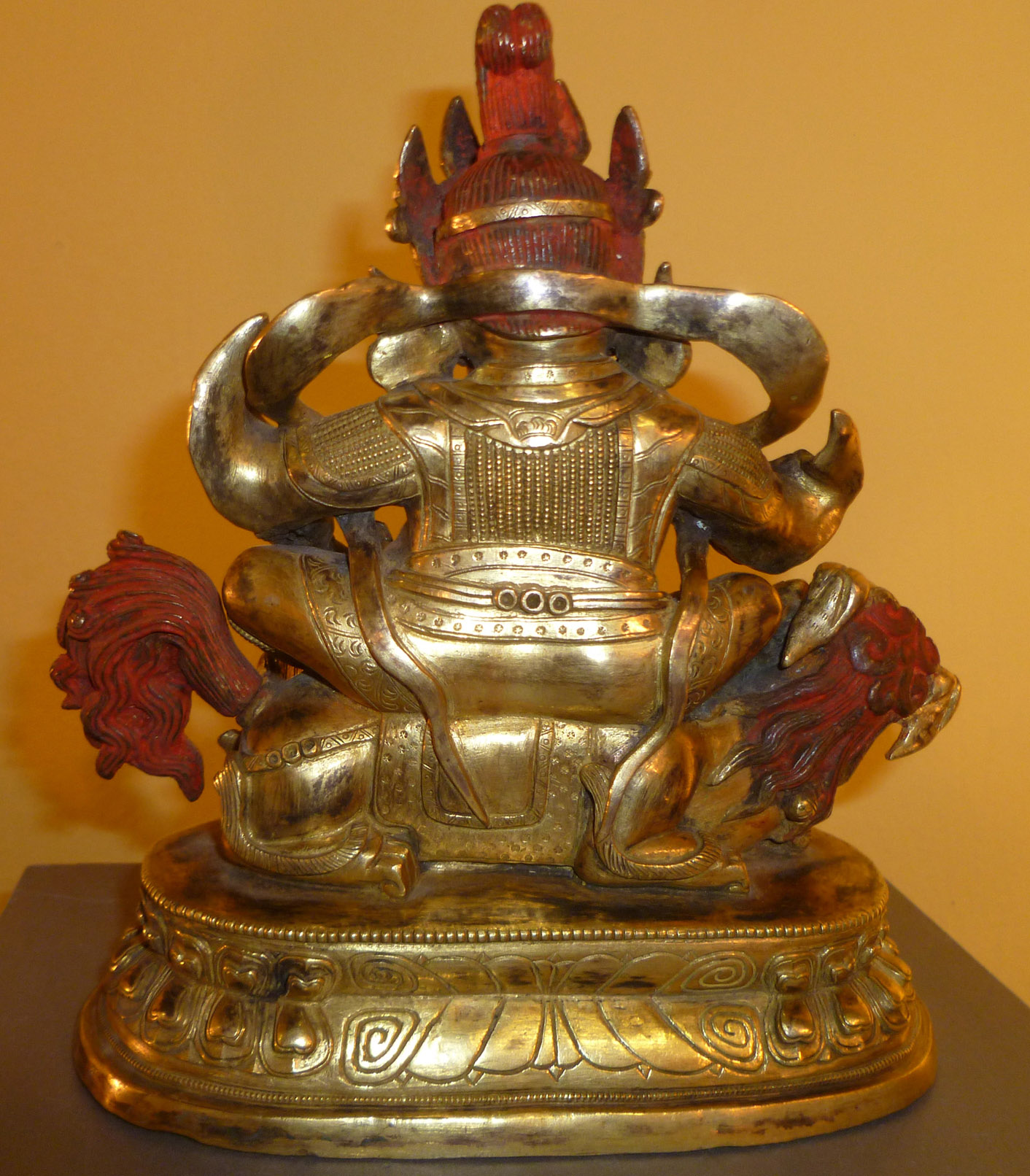|
|
«« go back
Vaishravana
" The Lord of Wealth God of abundance and prosperity Guardian King of the North"
Sino-tibetano - Gilded copper alloy with polychrome pigments - High 20 cm - 9.3 cm deep cm - 17.3 cm long - 18th century
Vaishravana, the Lord of Wealth, is the Buddhist counterpart of Kubera, the Brahmanical god of wealth and like him he presides over the domain of riches. As a Lokapala or Guardian King, Vaishravana looks after the Northern region and the Mount Sumeru, the centre of the universe. His abode is Alaka in the Himalayas, abounding in wealth and magnificence, where he is attended upon by Yakshas and Kinnaras. Vaishravana is also the king of Yakshas.
The body of Vaishravana is golden yellow in color and he has a stern expression. His right hand holds a banner of victory, while the left arm holds a mongoose, an animal associated with good fortune. The mongoose is shown vomiting jewels symbolizing the boon of this Lord of wealth. Vaishravana in addition is also the Guardian deity of the north direction. Thus his image is often placed on the outer walls of monasteries and temples along with the guardians of the other three directions. This is believed to be a safeguard against harmful influences which violate the sanctity of the sanctum inside.
In the present form he is shown seated on a roaring red lion, placed on a lotus base. His is a golden yellow complexion. Vaishravana has two hands, the right hand in holding a lemon and the left one a jewel–spitting mongoose, establishing him as the deity of wealth. A jewel offering has been shown in front of him. Vaishravana is wearing a five-pronged crown, symbolic of the Five Transcendental Buddhas. His hair is upswept in a knot with a jewel on it. His open eyes, frowning eyebrows, upturned lips, moustache and a beard are all painted. He wears a long and flowing scarf. The scarf rounds behind the head in the shape of a Prabhamandala (halo). The ornaments of the deity include necklaces, armlets and bracelets. Vaishravana has a snake around his body. In spite of adornment he is bare to the waist, and his legs are covered by a dhoti (skirt).
In Tibet, he has been one of the primary protectors of the Gelugpa Sect since the fourteenth century. There is a special ceremony in Tibet for imploring Vaishravana for riches, which is called Yanyung, and he plays an important part in the Tantras, in sorcery and exorcism. Vaishravana has two main aspects that of a warrior protector and that of deity of wealth. Here he has been shown as the deity of wealth. In southern Buddhism, particularly in the Indian sub-continent, Vaishravana is known as Jambhala, because he also carries a Jambhara (lemon) in one of his hands. Though he holds different attributes and forms e.g., a sword, a banner, lemon and flat vessel etc., his most common attribute or insignia is a mongoose (Nakula), often vomiting jewels and in all descriptions he is said to be fat and pot-bellied in appearance. His female counter part is Vasundhara, the goddess of wealth and prosperity.
Vaishravana, leader of the yaksha race, is a worldly guardian worshipped as both a protector and benefactor (wealth deity). He lives on the north side of the lower slopes of mount Meru in the Heaven of the Four Great Kings. As the leader of the Four Direction Guardians, he like the others, swore an oath of protection before the buddha Shakyamuni. The stories and iconography of the Four Guardian Kings arise originally with the early Buddhist sutras and become fully developed in the later Mahayana sutras. They are common to all schools of Tibetan Buddhism. Paintings of the Kings are generally found in association with a larger thematic set featuring the buddha Shakyamuni and the 16 Great Arhats.
|
